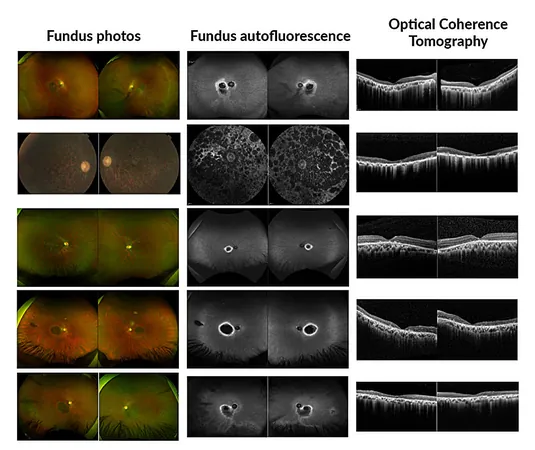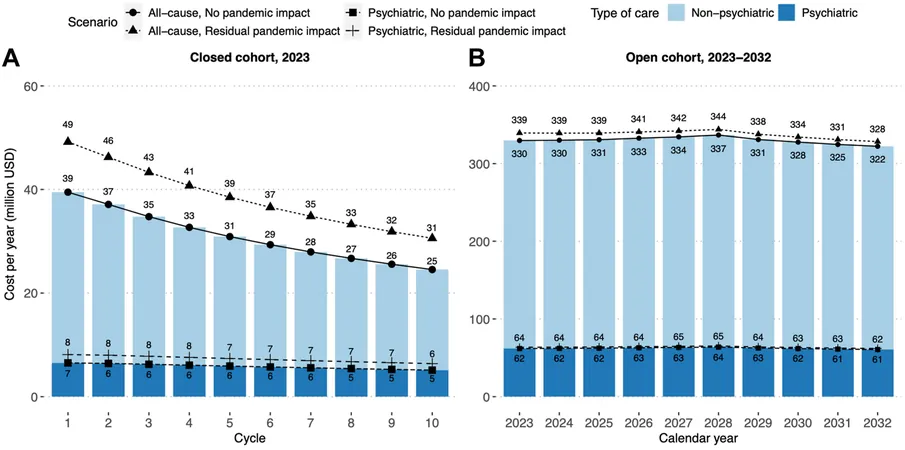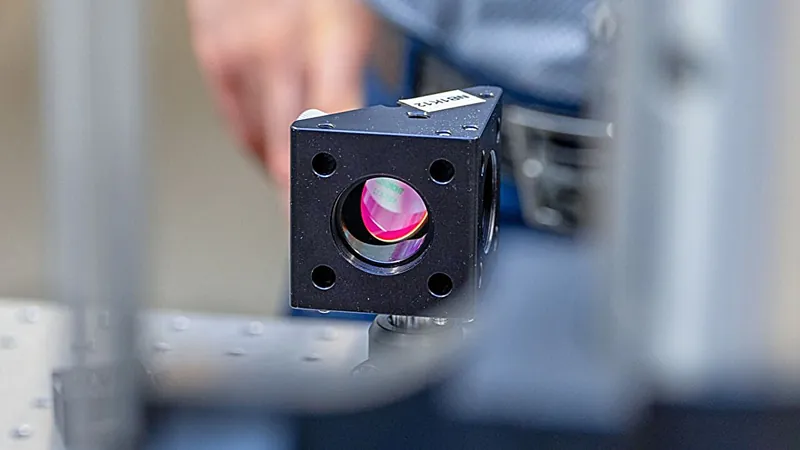
Shocking Breakthrough: Scientists Uncover Gene Linked to Rare Eye Disease!
2024-09-26
Author: Wei
Groundbreaking Discovery
In a groundbreaking discovery, scientists from the National Institutes of Health (NIH) have pinpointed a gene that plays a crucial role in certain inherited retinal diseases (IRDs), a category of disorders that devastate the eye's light-detecting retina and pose significant threats to vision. This revelation could change the future of treatment for millions suffering from these afflictions.
Scope of the Issue
Currently, over 2 million people around the globe are afflicted by IRDs, yet the rarity of each individual disease complicates research efforts and clinical trials aimed at developing effective therapies. The results of this exciting research were published in the esteemed JAMA Ophthalmology.
Research Findings
The study involved six unrelated participants, and researchers connected the gene UBAP1L to various forms of retinal dystrophies. These include maculopathy, impacting the macula and central vision crucial for reading, cone dystrophy, which affects color perception, and cone-rod dystrophy, which endangers night vision capabilities. Patients in this study began experiencing symptoms in early adulthood, often leading to severe vision loss by their late years.
Expert Insights
Dr. Bin Guan, chief of the Ophthalmic Genomics Laboratory at NIH's National Eye Institute (NEI) and senior author of the study, expressed the significance of identifying this gene. 'The patients exhibited symptoms akin to other IRDs, yet the root of their conditions remained elusive. Now that we have identified UBAP1L as the causative gene, we can delve into how its defect leads to these diseases and, importantly, aim to develop effective treatments.'
Genetic Testing Importance
The involvement of the UBAP1L gene is now added to a growing roster of more than 280 genes implicated in these complex conditions. Dr. Laryssa A. Huryn, co-senior author and an ophthalmologist at the NEI, emphasized the critical nature of genetic testing for patients suffering from retinal dystrophies. 'Our collaboration between the clinic and the lab is vital for unlocking further knowledge about retinal diseases.'
Future Directions
Through genetic evaluations, researchers discovered four variants of the UBAP1L gene, responsible for encoding a protein that is heavily expressed in retinal cells. While the exact function of the UBAP1L gene remains to be fully understood, evidence suggests that the identified variants may lead to a malfunctioning protein production.
Geographic Implications
Future investigations are expected to benefit from revealing that these genetic variants tend to be distinct within specific geographic regions. Remarkably, five out of the six families involved in this study hailed from South or Southeastern Asia or Polynesia, areas that have historically been underrepresented in genetic research.
Collaborative Effort
This research is a collaborative effort between entities including Moorfields Eye Hospital and University College London, pointing toward a bright future for the exploration and understanding of retinal diseases. Stay tuned, because this breakthrough might be the key that unlocks new hope for countless individuals around the world!




 Brasil (PT)
Brasil (PT)
 Canada (EN)
Canada (EN)
 Chile (ES)
Chile (ES)
 España (ES)
España (ES)
 France (FR)
France (FR)
 Hong Kong (EN)
Hong Kong (EN)
 Italia (IT)
Italia (IT)
 日本 (JA)
日本 (JA)
 Magyarország (HU)
Magyarország (HU)
 Norge (NO)
Norge (NO)
 Polska (PL)
Polska (PL)
 Schweiz (DE)
Schweiz (DE)
 Singapore (EN)
Singapore (EN)
 Sverige (SV)
Sverige (SV)
 Suomi (FI)
Suomi (FI)
 Türkiye (TR)
Türkiye (TR)